The cool cats that fought for workers' rights
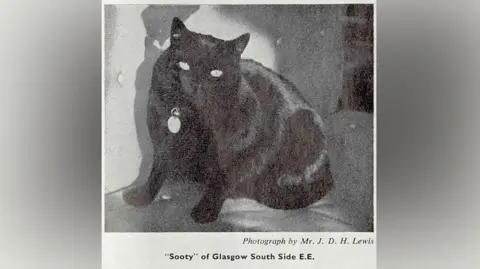 Modern Records Centre, University of Warwick
Modern Records Centre, University of WarwickAs some enjoy a day away from work on a bank holiday associated with the fight for workers' rights, one archive has been highlighting the role feline friends played in the struggle.
From columnists to rodent controllers, examples of trade union cats go back at least a century, says Liz Wood, from the Modern Record Centre at the University of Warwick.
The Coventry facility holds archives of national trade unions, employers' organisations and other protest groups.
Despite not being known for their collective organisational skills, or giving a stuff about humans, the felines' historical use is an "important part of social history", the project archivist explains.
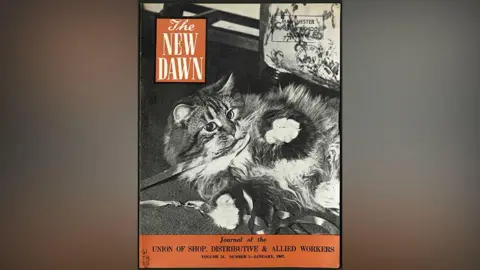 Modern Records Centre, University of Warwick
Modern Records Centre, University of WarwickIn one example a "long-haired floofy" is pictured on the front cover of The New Dawn, the journal of the Union of Shop, Distributive and Allied Workers (USDAW).
Then Prime Minister Harold Wilson and his 1967 New Year's message, were relegated to the inside pages by the cover star.
"They obviously know what's going to attract their members, and it's more likely to be a cat playing with a big piece of ribbon, than the picture of the prime minister," explained Ms Wood.
"I was assuming that it was a reader's cat, but who knows, it could just be a member of staff."
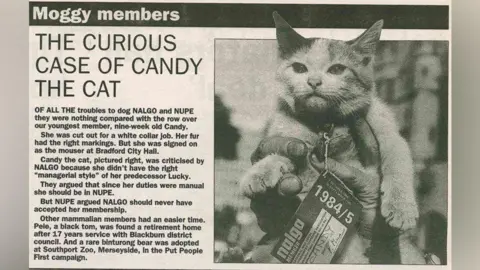 Modern Records Centre, University of Warwick
Modern Records Centre, University of WarwickIn another case in the archive shared on Bluesky, a demarcation dispute is documented between two public service unions over nine-week-old kitten Candy.
The mouser employed by Bradford City Council had joined the National and Local Government Officers Association (NALGO) which represented mostly white collar workers.
However she was criticised in the union's journal, Public Service, with the organisation arguing that because her duties were manual she should be in the National Union of Public Employees.
Further criticism was heaped upon the kitty, described as failing to have the "managerial style" of her predecessor Lucky.
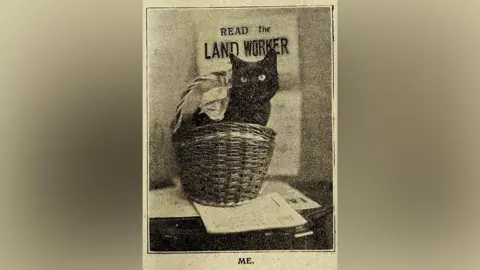 Modern Records Centre, University of Warwick
Modern Records Centre, University of WarwickCats may be a staple of internet culture but from medieval manuscripts onwards, pictures of our feline companions have been used to grab people's attention and get engagement, said Ms Wood.
Clearly mentions in the trade union journals were "just an excuse to include big pictures of nice cats," she said.
"But it gives a little insight into how people were bringing cats into the workplace and how they were engaging with them".
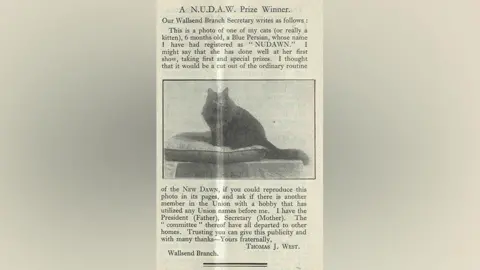 Modern Records Centre, University of Warwick
Modern Records Centre, University of WarwickOne feline stalwart of the 1920s trade union movement had a regular column in the National Union of Agricultural Workers journal, The Land Worker.
Thomas the black cat ran competitions for younger readers and featured on union postcards, said Ms Wood.
"The idea of the journal was that it would be something the whole family could engage with," she said.
Another prize-winning pedigree Blue Persian was officially registered with a name in honour of the National Union of Distributive and Allied Workers (NUDAW).
A government working cat, "like the Downing Street cat, but a local Glaswegian version" features in the pages of a 1962 Ministry of Labour magazine, Minilabour.
It details Sooty's half crown pay did not cover the cost of his food, at his Glasgow South Side office, but any rise would be rejected by the chancellor due to his "pay paws".
But he was very well looked after by the staff, added Ms Wood, and "gives an idea of him being a central part of the workplace".
Follow BBC Coventry & Warwickshire on BBC Sounds, Facebook, X and Instagram.
